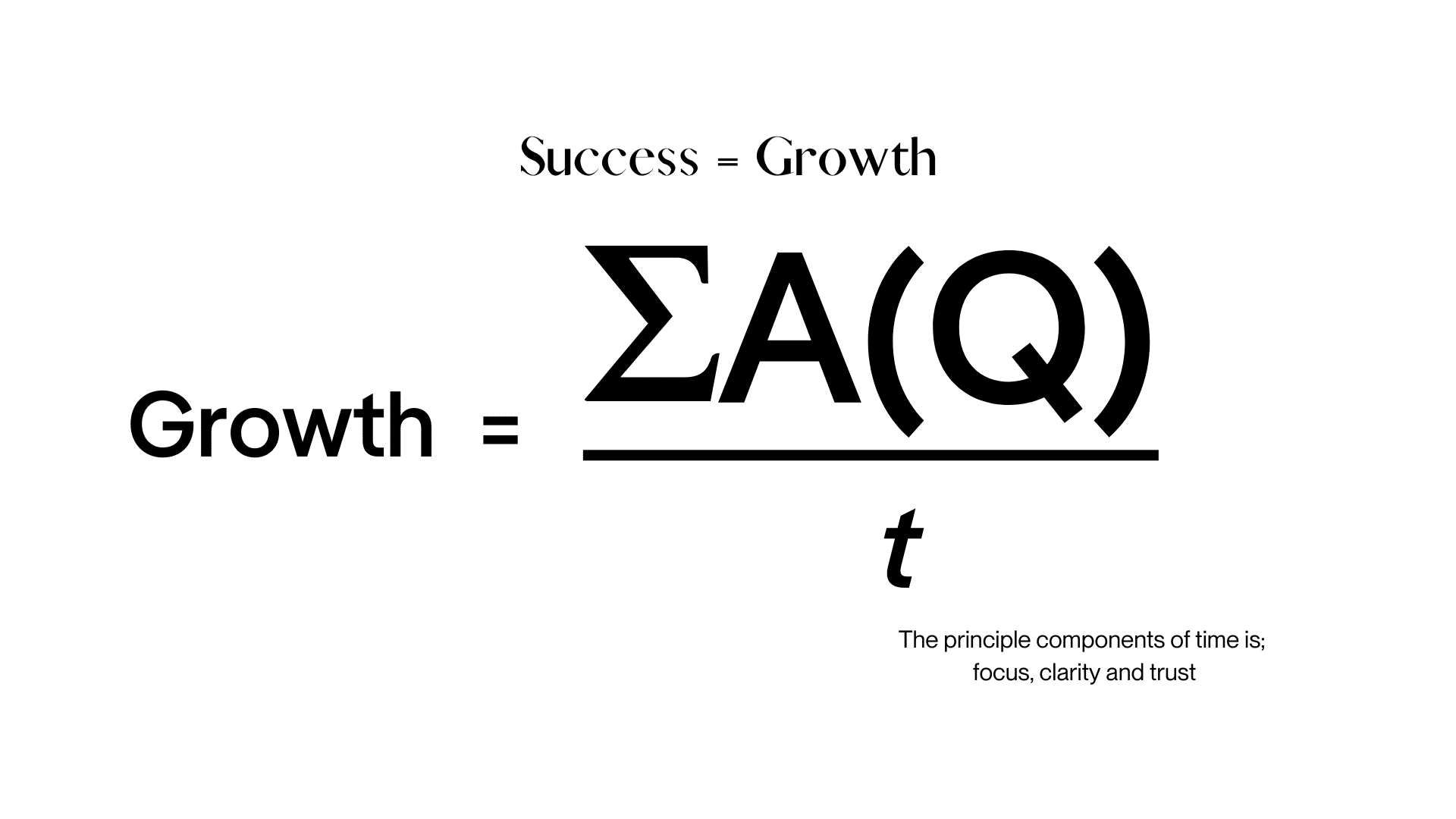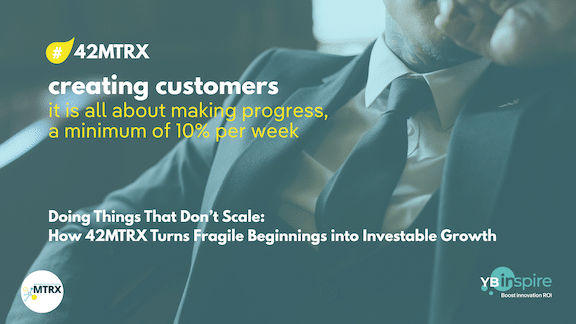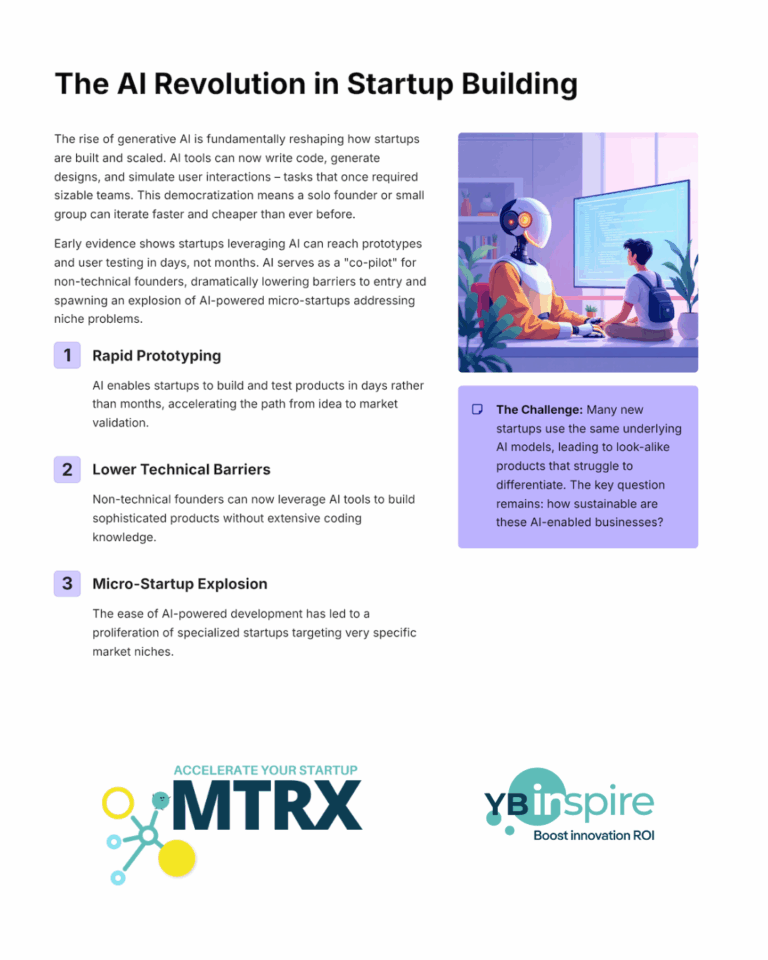Doing Things That Don’t Scale: How 42MTRX Turns Fragile Beginnings into Investable Growth
Paul Graham’s classic essay “Do Things That Don’t Scale” remains one of the most valuable guides for startup founders. His message is simple but often ignored: most startups don’t take off automatically — founders make them take off.
In the early days, progress often looks fragile, small, and unscalable. Recruiting users one by one, delighting them personally, even manually doing the work behind your software — these are the cranks that get the engine started. What transforms this fragile stage into an unstoppable force is the discipline of weekly growth tracking.
The 42MTRX framework builds directly on this principle. It provides founders with a structured way to align discovery, validation, creation, and company building — while ensuring that every step is measurable, compounding, and credible to investors.
Fragility is Normal — but Structure Prevents Collapse
Paul Graham reminds us that early-stage startups are like newborns: fragile, unimpressive, and seemingly incapable of ever becoming juggernauts. Airbnb almost died without its founders spending 30 days manually recruiting hosts. Stripe didn’t wait for adoption; the Collison brothers personally set up Stripe on laptops of early users.
42MTRX helps founders embrace this fragility while reducing the risk of collapse:
- User Growth / Customer A–C Growth: Even if numbers are small, measuring them weekly proves whether you are compounding.
- Customer Feedback Number: Every conversation, survey, and call builds the foundation for product–market fit.
- Relevancy & Urgency Scores: Do your early users truly need the product, and do they need it now? Tracking these signals prevents drifting into false optimism.
Fragility is not a flaw — it’s the condition for growth. The difference between survival and collapse is whether you systematize your small wins.
2. Weekly Growth: The Metric That Compounds
One of Graham’s strongest points is the importance of weekly growth rates. If you grow 10% a week, 100 users become 14,000 in one year, and 2 million in two. The small numbers feel insignificant, but the compounding effect is extraordinary.
In 42MTRX, weekly growth becomes the heartbeat of the system:
- User Growth & Retention: Not just signups, but how many stay active week after week.
- Customer A/B/C Growth: Measuring different customer segments shows where adoption accelerates fastest.
- Speed of Implementation: Growth is not only about acquiring customers — it’s about delivering value at scale. How many people are needed to implement? How much customization is required? Do customers need support or can they self-serve? The speed and cost of delivery define your scalability. If you know the exact time and cost of turning a new sale into a fully onboarded, satisfied customer, you can confidently manage growth and prevent bottlenecks.
- Financial Metrics (CAC, CLV): Even at small scale, consistent improvement here signals long-term viability.
Startups that track weekly growth in 42MTRX terms can show investors: “We don’t just have an idea. We have momentum.”
3. Doing the Unscalable as a Strategic Advantage
Graham emphasizes that startups often resist unscalable actions because they feel too small or too laborious. But 42MTRX reframes unscalable actions as strategic leverage points:
- Recruiting Users Manually: Not wasted time, but essential Customer Validation data.
- Delighting Early Adopters: Extraordinary service builds Reference Cases that become trust signals later.
- Manual Operations: Acting as your own software creates insight that improves speed, relevancy, and retention.
- Narrow Market Fire Strategy: Start in a small, tight segment where Customer Growth and Retention can snowball — then expand.
These “unscalable” moves build culture and DNA. Stripe is still known for customer obsession. Airbnb still emphasizes trust and host experience. What starts as fragility becomes your lasting competitive edge.
4. Why Investors Care About Weekly Progress
Investors don’t expect perfection in early-stage startups — they expect evidence of relentless progress.
The 42MTRX weekly growth discipline makes that visible in investor-ready terms:
- Clear Metrics: User growth, customer segment growth, feedback numbers, and retention tracked week by week.
- Execution Discipline: Speed of implementation and reference cases show the team is learning fast.
- Scalability Proof: Even manual onboarding demonstrates demand that automation will later amplify.
- Financial Readiness: Improving CAC and CLV tell the story of a company becoming efficient over time.
For investors, growth equals de-risking. A startup growing consistently — even from small numbers — signals a team worth backing.
This is also the reason why we the PULSE our bi-weekly Progress meeting

5. 42MTRX: Turning Fragile Starts into Growth Engines
Paul Graham’s essay is a reminder that startups are powered aircraft, not projectiles. They don’t just launch and fly — founders power them with effort, attention, and compounding discipline.
The 42MTRX ensures this power is not random but structured:
- From fragile beginnings to measured user growth.
- From manual onboarding to systematic retention and reference cases.
- From unscalable actions to scalable funnels, CAC/CLV proof, and investor-ready growth stories.
With 42MTRX, every unscalable act is tracked, every week counts, and growth is never left to chance.
✅ Conclusion: Doing things that don’t scale gets your engine turning. Measuring weekly growth across user numbers, customer segments, feedback, retention, relevancy, urgency, speed, CAC, CLV, and reference cases ensures you keep accelerating. Following the 42MTRX framework makes your startup not only capable of growth — but credible to investors who want to back it.










